Strength training is a numbers game: How much weight? How many reps? How many sets? How many days per week?
But there’s one number that even longtime lifters often ignore, and it can be the difference between stalling out and making progress, hitting a plateau and hitting a personal record — even between getting hurt and staying healthy. And that’s tempo.
Tempo refers to the pace at which you lift or lower, and the length of the pauses at either end of the lift.
Hairsplitting? Try this: Stand up and do five body-weight squats at whatever speed you wish. Rest for 30 seconds or so, then perform five more reps in the following manner:
- From standing, take five seconds to lower yourself into a full squat.
- Hold the “down” position for a three-count.
- Stand up quickly.
- Without pausing, repeat the whole sequence again for a total of five nine-second reps.
In all likelihood, the first five reps were relatively easy, but the last five were another matter altogether. What happened?
“Moving slowly helps to ensure that you’re performing the exercise correctly,” says Noah Gabriel-Landis, CSCS, PICP, OPEX, USAW, owner of Priority Strength. “Moving with a steady cadence allows you to recognize if things aren’t going according to plan.”
As you subtly course-correct each rep, you also place more tension on the working muscles, forcing them to work harder — and for a longer period. This concept is known by trainers as “time under tension,” and the more of it you experience in each set, the more challenging your workout becomes.
Tempo training also offers you a variety of new ways to challenge your muscles without altering the weight you lift:
- Moving slowly on the way down helps maintain good form and builds strength.
- Moving slowly on the way up can help avoid relying on momentum to complete the lift.
- Moving explosively can help improve power and athletic performance.
- Pausing can add emphasis to challenging or otherwise important phases of an exercise.
- Moving slowly on the way down and creatively navigating (or even skipping) the way up can make challenging exercises like pull-ups and dips more accessible.
The following workout, designed by Gabriel-Landis, offers a sampling of several different types of tempo training: fast, slow, paused, continuous. Try it out one to three times a week, on nonconsecutive days, for a challenging introduction to tempo training. You’ll never lift a weight the same way again.
Making Sense of Tempo Markers
Tempo is typically communicated with a notation of numbers and letters. This guide will help you make sense of the tempo markers in this workout, as well as other programs you may encounter. Remember: Tempo markers correspond to the phases — though not necessarily the sequencing — of an exercise.
- The first number refers to the duration of the eccentric (lowering) phase.
- The second number refers to the duration of the pause you perform after you lower the weight.
- The third number, or letter, describes the concentric (lifting) phase: A number indicates duration; “X” stands for “explosive” (perform this phase as fast as you can); “A” stands for “assisted” (assist yourself as much as necessary to return to the starting position).
- The fourth number refers to the duration of the pause after you’ve completed the lift.
For example: On your first exercise, back squats (tempo: 4010), take four seconds (4) to descend as deeply as you can into the squat position. Without pausing (0), take about a second (1) to ascend to the starting position. Then start the next rep without pausing (0), completing eight to 10 reps in the same manner.
Use the “one-thousand-one, one-thousand-two” method of counting to be sure you’re moving at the right speed.
The Workout
Warm up for five to 10 minutes. (For a dynamic pre-lift warm-up routine, check out “The Perfect Warm-Up“.)
Then, perform the moves as alternating pairs, switching between sets of each pair of similarly numbered exercises (A1 and A2, for instance). Complete all the sets listed before moving on to the next pair.
For the first pair of moves (squats and pull-up negatives), for example, you’ll perform a set of squats, rest 90 seconds, perform a set of pull-up negatives, rest 90 seconds. Go back to the squats and repeat the whole sequence until you complete two to four sets of both moves. Then move on to the next pair of moves, and so on.
Newer lifters are encouraged to perform fewer reps of each move; more advanced lifters can aim for the higher end of the range.
A1 Back Squat
Tempo: 4010
Sets x Reps: 4 x 8–10
Rest between sets: 90 seconds
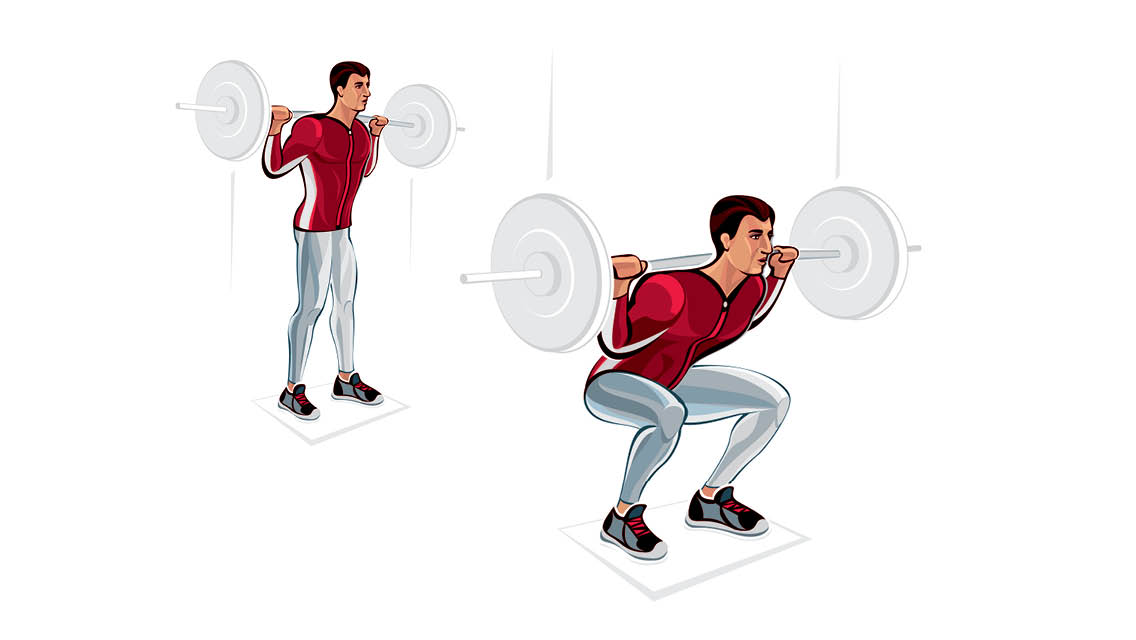
- Place a barbell inside a squat rack — loaded with plates, as needed — and take an overhand grip on the bar with your hands about 6 inches wider than shoulder width on either side.
- Duck your head under the bar, squeeze your shoulder blades together, and settle the bar onto your upper back just above your shoulder blades.
- Stand and walk back a few feet.
- Maintaining a natural arch in your lower back and looking straight ahead, take four seconds to bend your knees and hips as far as you can, or until your hips are slightly lower than your knees. Do not raise your heels off the floor.
- Without pausing, quickly reverse the movement, returning to a standing position, and repeat.
No barbell? You can also perform this move with body-weight only — or while holding a dumbbell or kettlebell in front of your chest.
A2 Pull-up Negatives
Tempo: 60A0
Sets x Reps: 3–4 x 4–6
Rest between sets: 90 seconds
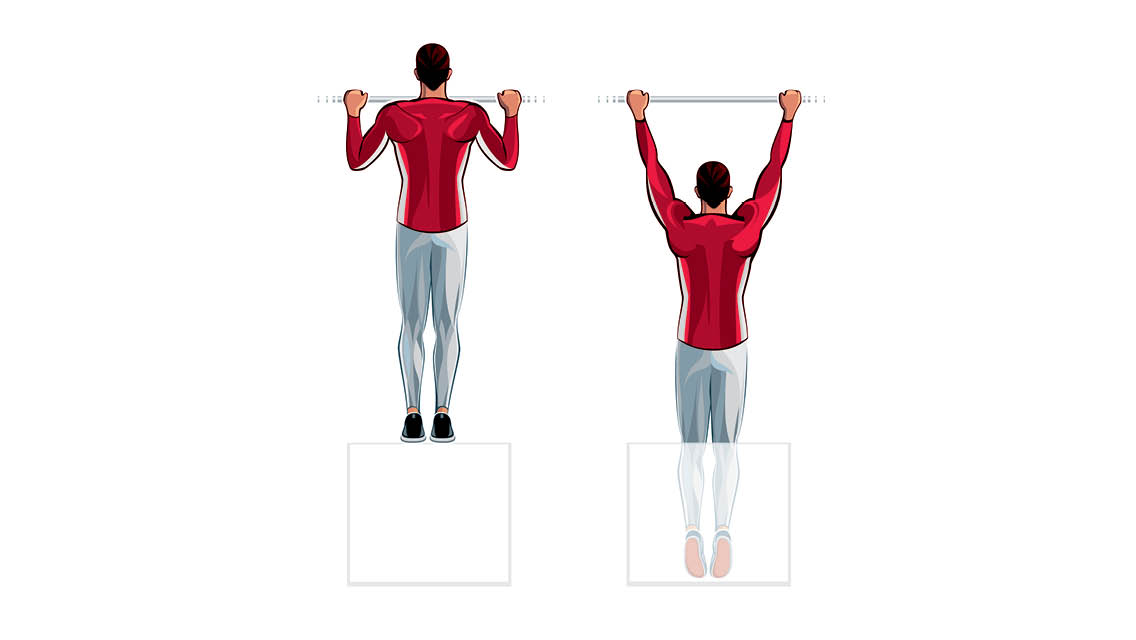
- Place a box or bench under a pull-up bar.
- Take an overhand, shoulder-width grip on the bar.
- Jump up to the point where your chin clears the bar.
- Without pausing, take a full six seconds — or as long as you can — to lower yourself until your arms are straight.
- Without pausing, jump up to the starting position using the bench or box — and repeat the move.
This move is very advanced! For additional assistance, loop an exercise band over the top of the bar and pull the back loop through, creating one long loop. Then place one knee through the loop so that the band provides assistance on the way up.
B1 Lying Leg Curls
Tempo: 5010
Sets x Reps: 3–4 x 4–6
Rest between sets: 90 seconds

- Lie face down on the leg-curl machine, with the backs of your ankles on the pad of the resistance arm.
- Take hold of the handles and place your chest flat against the pad.
- Keeping your body still, quickly bend your legs as much as possible, trying to bring your heels as close as possible to your butt.
- Without pausing, take five seconds to slowly reverse the movement, and, without pausing, repeat.
B2 Dumbbell Push Press
Tempo: 30X1
Sets x Reps: 3–4 x 10–12
Rest between sets: 90 seconds

- Stand upright holding two dumbbells at shoulder height.
- Bend both legs slightly.
- Explode upward as if trying to jump off the floor, using the momentum to propel the dumbbells to arm’s length overhead.
- Pause for one second, then take three seconds to lower the dumbbells back to the starting position.
- Without pausing in the “down” position, repeat the move, and continue until you’ve completed the appropriate number of reps.
C1 Leg Press
Tempo: 2010
Sets x Reps: 2–3 x 15–20
Rest between sets: 60 seconds
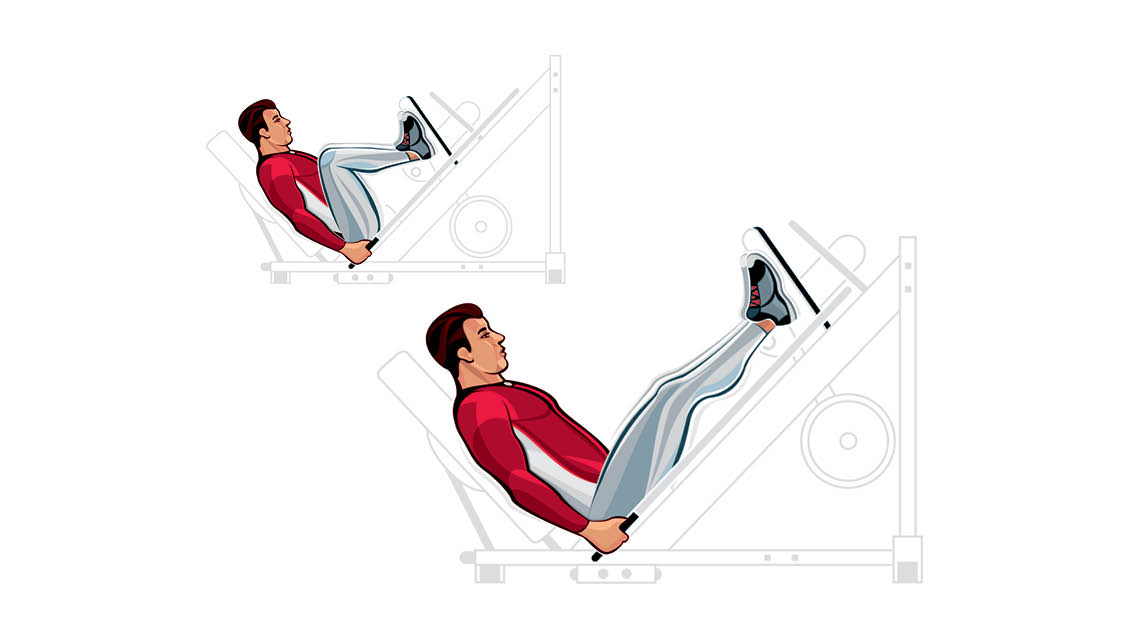
- Load the machine with a moderate weight.
- Sit in the seat and brace your feet, at about shoulder-width, midway up the platform.
- Press the platform upward, then rotate the safety catches to the “off” position.
- Keeping your lower back against the platform, take two seconds to bend your legs until your knees are near your armpits.
- Without stopping, push the platform forcefully upward, returning to the starting position, and repeat without a pause in the “up” position.
C2 Seated Row
Tempo: 2011
Sets x Reps: 2–3 x 12–15
Rest between sets: 60 seconds
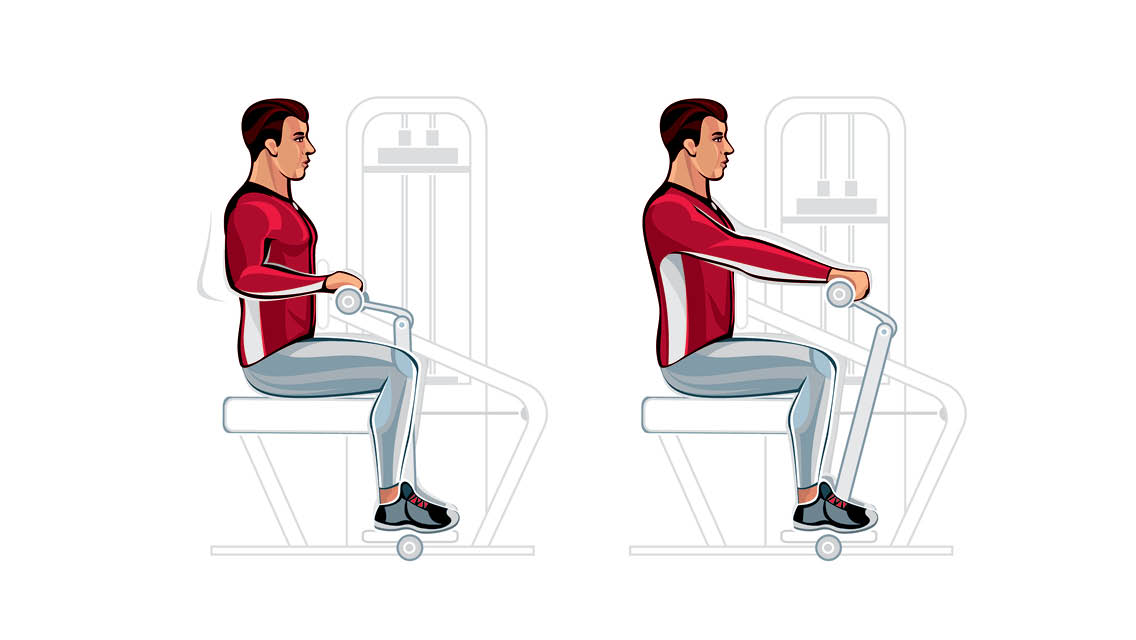
- Select a moderate resistance on the weight stack of the machine.
- Sit on the seat, put your feet on the footrests, bend your knees and lean forward, taking hold of the handles.
- With your lower back in its natural arch, sit upright so the weight lifts slightly.
- Keeping your back straight and your shoulders down, take one second to first draw your shoulders back as far as possible, and then bend your arms, pulling the handles as close as possible toward your abdomen.
- Pause for one second, take two seconds to reverse the move, and repeat without pausing in the “down” position.
D1 Standing Calf Raise
Tempo: 1111
Sets x Reps: 3 x 12–15
Rest between sets: 30 seconds
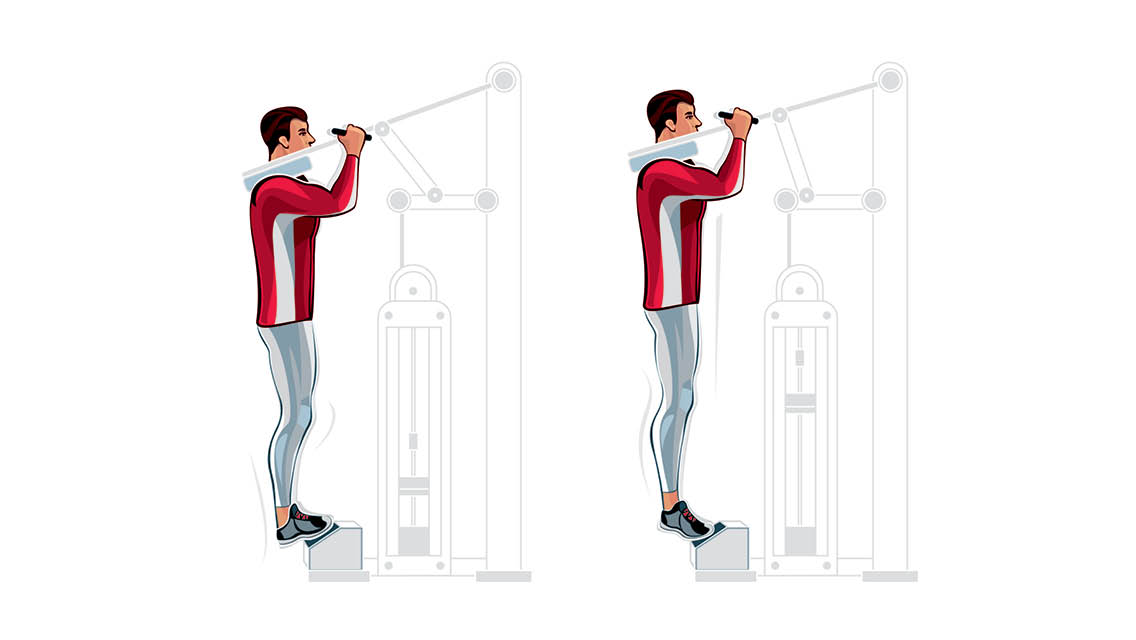
- Adjust the pads on a standing calf machine to shoulder-height.
- Select a moderate-to-heavy weight on the machine.
- Place the balls of your feet, about hip width apart, on the nonskid platform, bend your knees, and stand upright.
- With your knees slightly bent, take one second to descend until you feel a deep stretch in your calves.
- Pause for one second.
- Reverse the move, coming up onto your toes as high as possible.
- Pause for one second.
D2 Lateral Raise
Tempo: 2020
Sets x Reps: 2–3 x 12–15
Rest between sets: 30 seconds
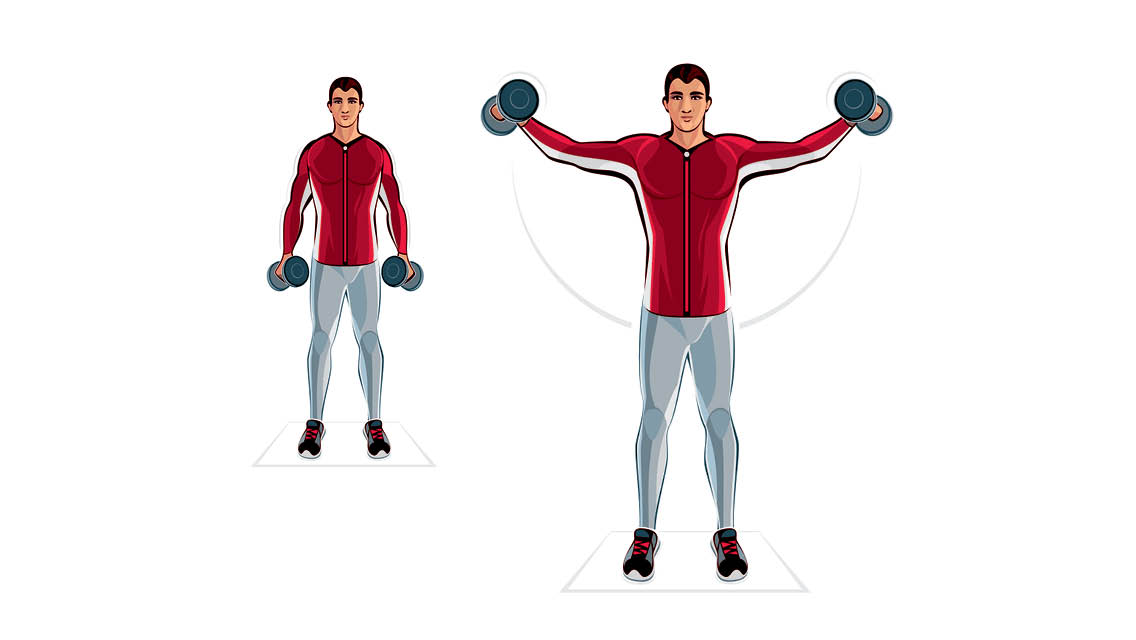
- Stand upright, holding two dumbbells by your sides.
- Maintaining a tall spine, take two seconds to raise the dumbbells directly out to your sides, keeping your arms long and your palms facing downward throughout the move.
- Without pausing, slowly reverse the move, taking two seconds to return to the starting position, and repeat without pausing.
(For more on the lateral raise, and variations of the move, see “BREAK IT DOWN: The Lateral Raise.”)
This article originally appeared as “Time Under Tension” in the November 2021 issue of Experience Life.



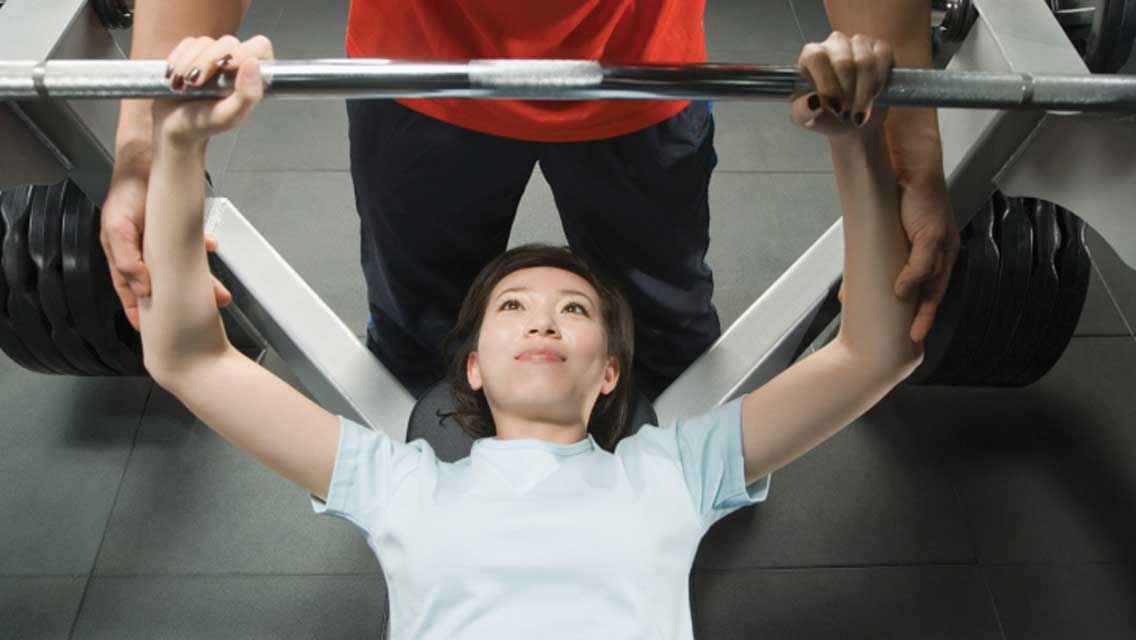
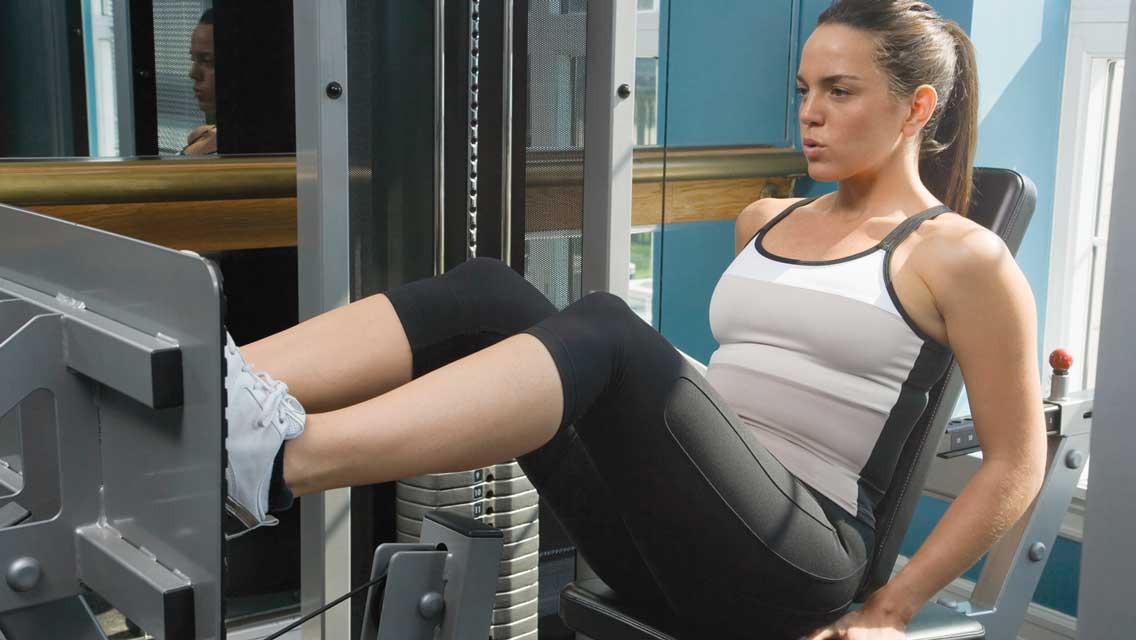
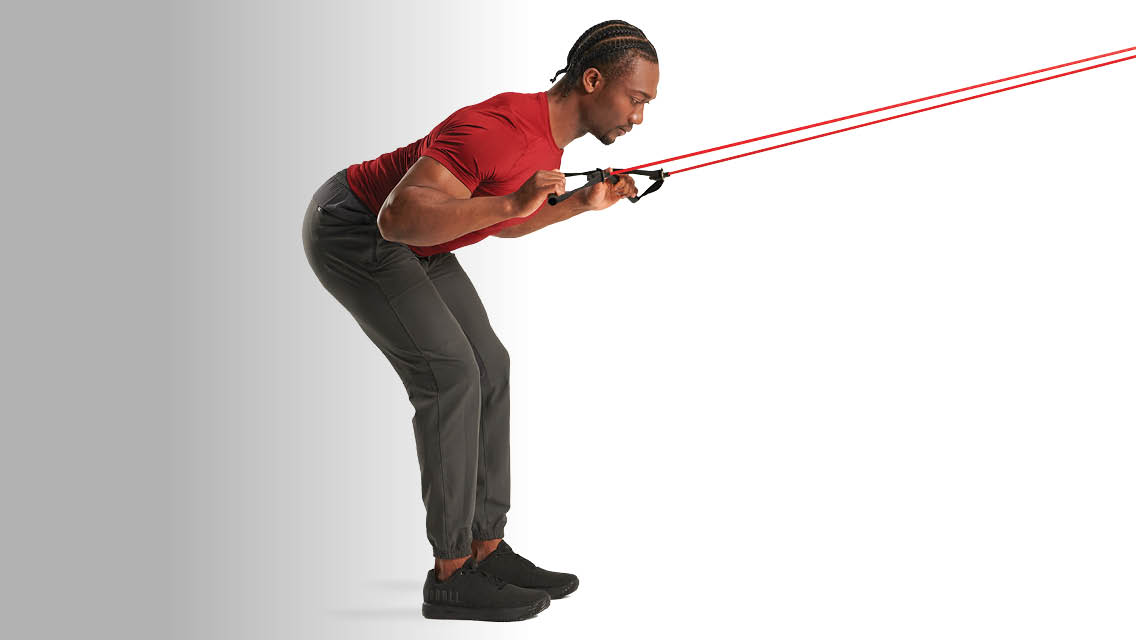
This Post Has 0 Comments